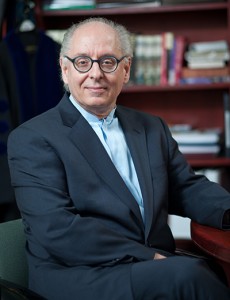"Our job as scholars, teachers and students is to always seek the truth." - Sam L Grogg

I had a tough time with the “These things are different; these things are alike” exercises in elementary school. I got the fact that oranges and pork chops were different, but they were both food—see the problem? It became increasingly difficult over the years to segregate my learning experiences into discrete packages of acquired knowledge, though that is exactly what the disciplinary culture of higher education most often seeks to do.
Colleges and universities are literally built around the separation of areas of study—there are science buildings (I have my office in one), business buildings, humanities buildings and so on. Each structure is devoted to a field of inquiry and learning with a territory to protect. Breaking those territorial barriers has been tough over the past several decades, but the walls are getting lower and lower.
Interdisciplinary studies and activities are increasing in higher education throughout the curricula of the liberal and professional educational landscape. Employers, when surveyed, are in a supermajority of agreement that a broad foundational liberal education is essential. And the ability to collaborate with individuals of varying and different expertise and from a variety of cultural backgrounds and orientations is absolutely critical.
The connective tissue that is represented by the many interdisciplinary programs in the College and their embrace of diverse subject matter and a wide range of study approaches and techniques provides our students with a learning opportunity that just makes sense. Specialization—a major area of study—still has pertinence in developing our future citizens and leaders. But that specialization, that passionate focus, thrives in a connected context.
The interdisciplinary approach to learning allows a scientist to understand the ethical context of discovery, a future litigator to appreciate the power of story, or a dancer to understand anatomical function. I have long been a devotee of reading detective fiction and well remember a scene in a Ross Macdonald novel where his detective hero Lew Archer is standing on Mulholland Drive looking at the nighttime Los Angeles landscape. The millions of twinkling lights stretch out for miles as Lew muses that if he could only connect them all he might finally discover the truth.
Our job as scholars, teachers and students is to always seek the truth. The path to the answer is often best pursued through a network of connected studies and an attitude that ranges easily from the highly focused to the openly broad and contextual.
Sincerely,
Sam L Grogg
Dean
This article appeared in the Spring 2016 edition of The Catalyst, the College of Arts and Sciences newsletter.
For further information, please contact:
College of Arts and Sciences
Science Building, Room 127
p – 516.877.4120
Department of Biology
Science Building Room 103
p – 516.877.4200